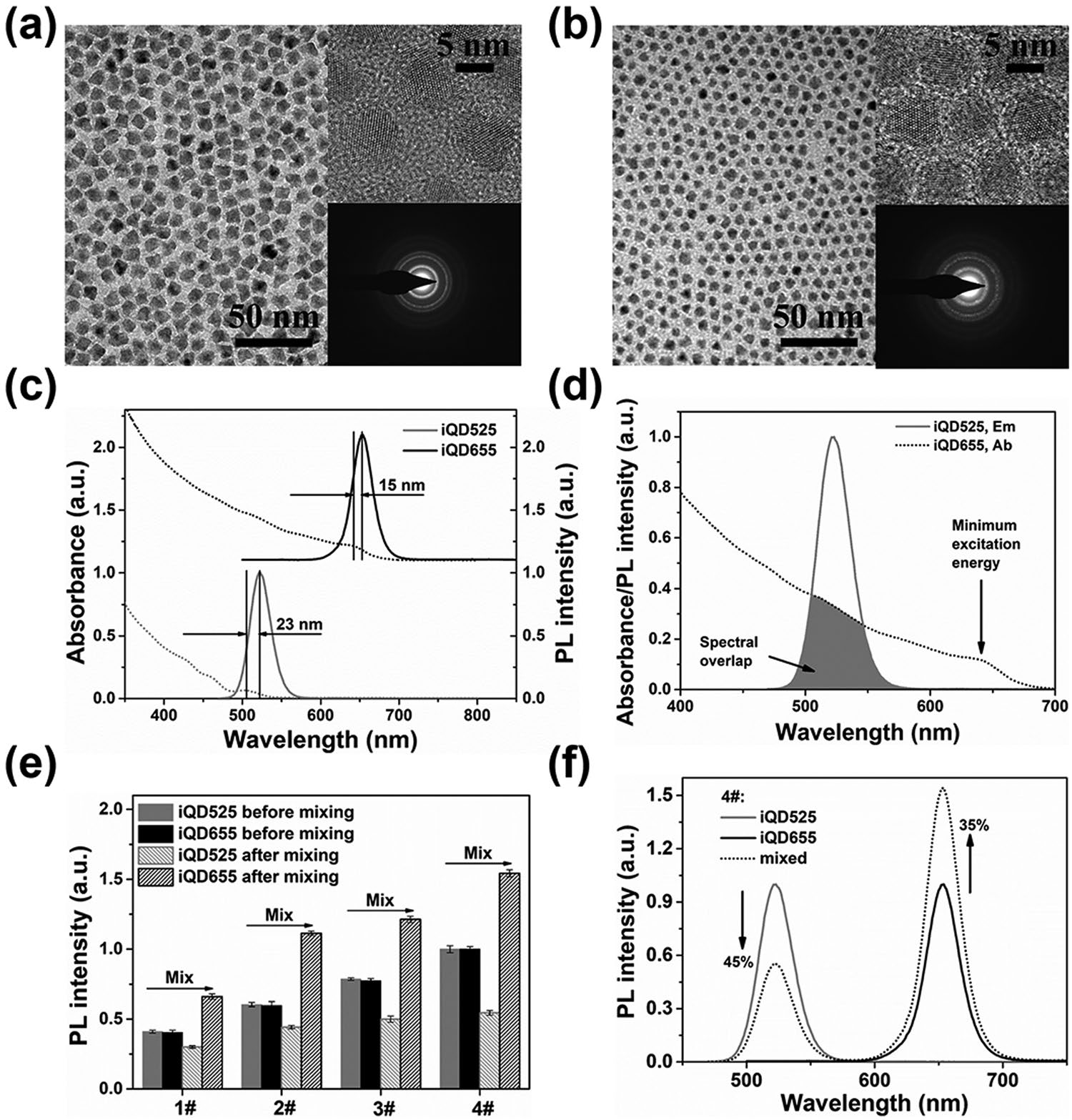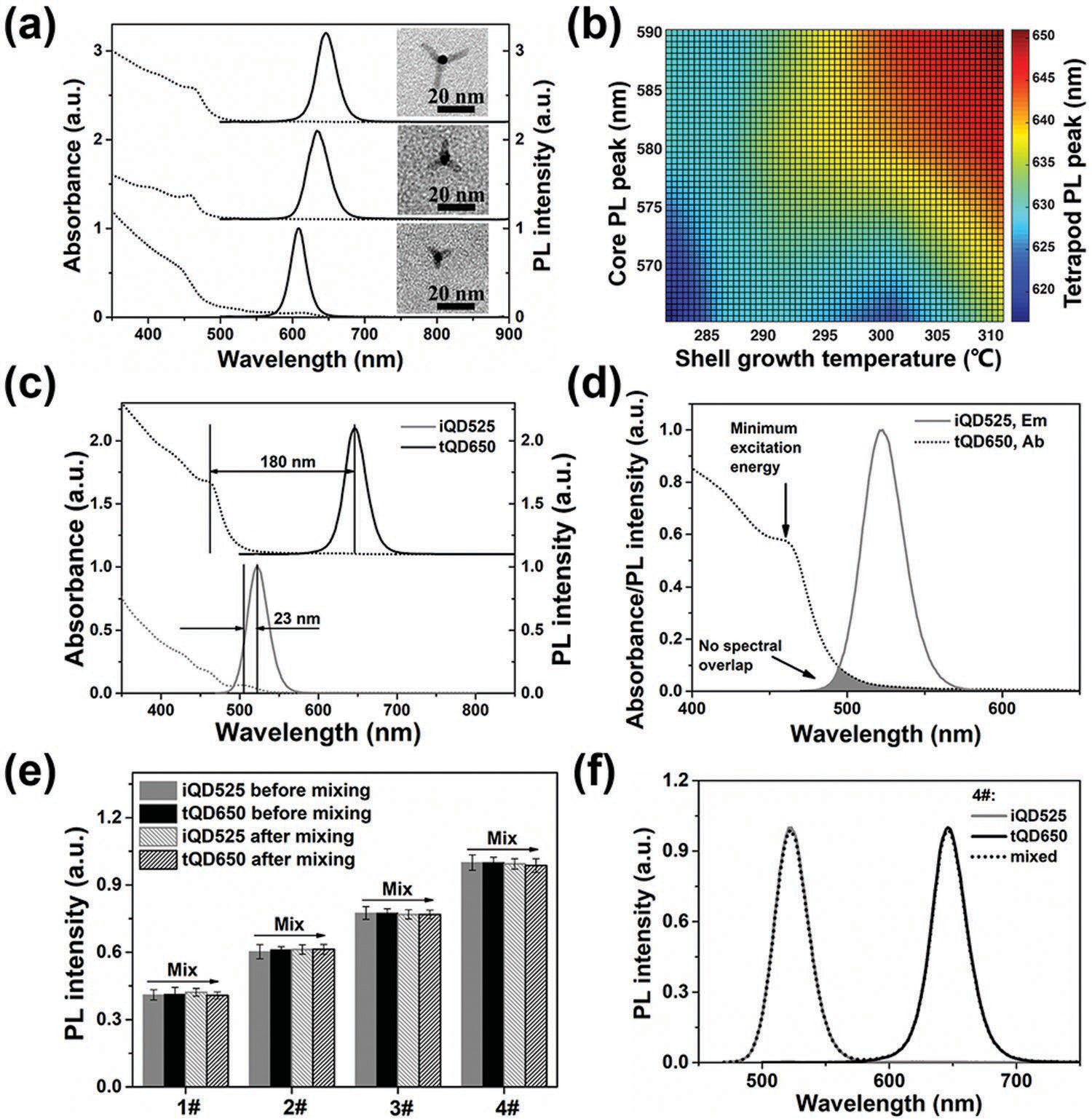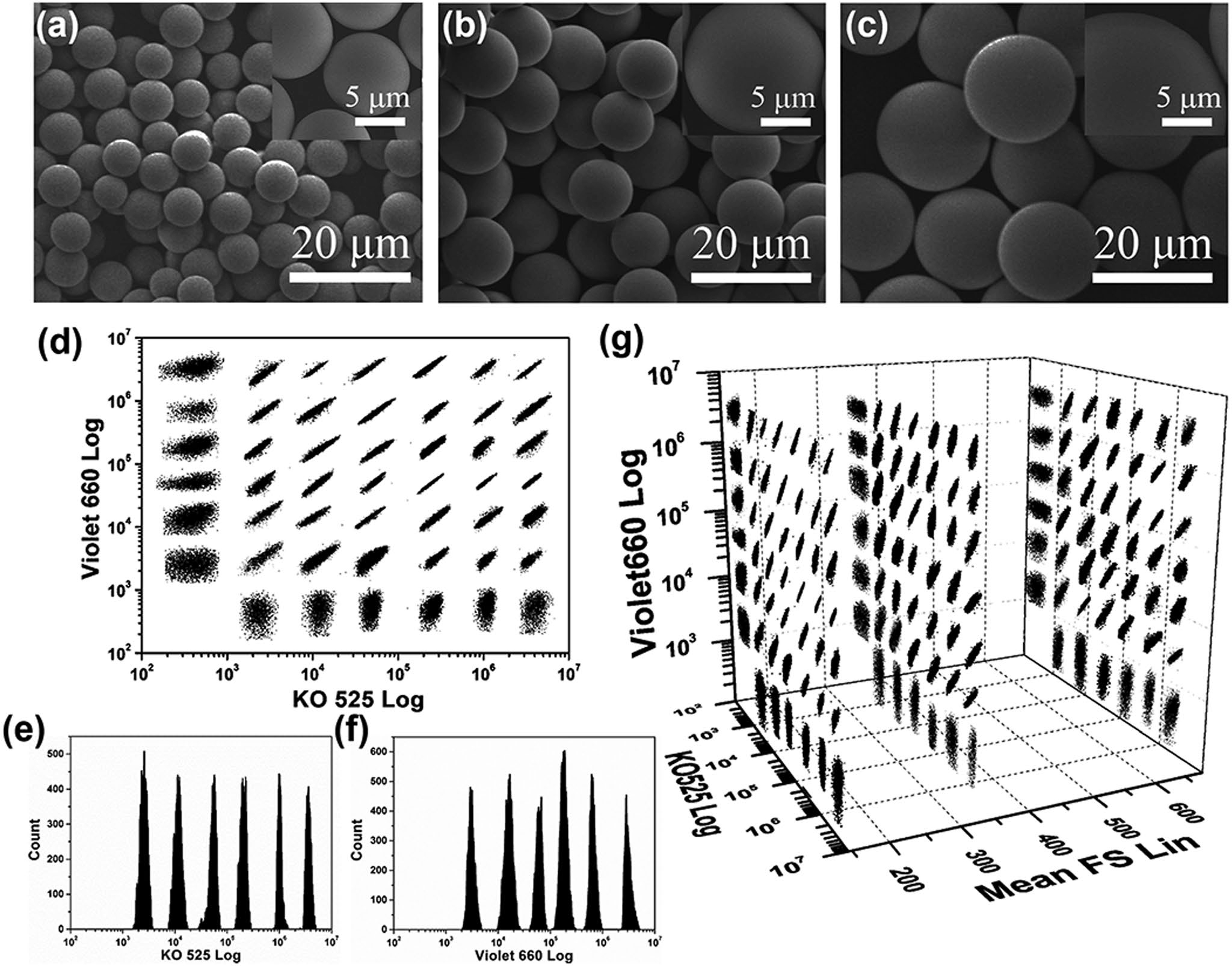PCATALOG
Precisely Encoded Barcodes Using Tetrapod CdSe/CdS Quantum Dots with a Large Stokes Shift for Multiplexed Detection
Pubdate:2021-12-23 Click:818
A serious obstacle to the construction of high-capacity optical barcodes in suspension array technology is energy transfer, which can prompt unpredictable barcode signals,limited barcode numbers, and the need for an unfeasible number of experimental iterations.This work reports an effective and simple way to eliminate energy transfer in multicolor quantum dots (QDs)-encoded microbeads by incorporating tetrapod CdSe/ CdS QDs with a large Stokes shift (about 180 nm). Exploiting this unique feature enables the facile realization of a theoretical 7 ´ 7-1 barcoding matrix combining two colors and seven intensity levels. As such, micro- beads containing tetrapod CdSe/CdS QDs are demonstrated to possess a powerful encoding capacity which allows for precise barcode design. The ability of the Shirasu porous glass membrane emulsification method to easily control microbead size facilitates the establishment of a 3D barcode library of 144 distinguishable barcodes, indicating the enormous potential to enable large-scale multiplexed detection. Moreover, when applied for the multiplexed detection of five common allergens, these barcodes exhibit superior detection performance (limit of detection: 0.01–0.02 IU mL-1)
for both spiked and patient serum samples. Therefore, this new coding strategy helps to expand barcoding capacity while simultaneously reducing the technical and economic barriers to the optical encoding of microbeads for high-throughput multiplexed detection.

1.Introduction
However, the spectral overlap among multicolor fluorophores inevitably generates an intractable ensemble fluorescence phe- nomenon, such as stochastic Förster resonance energy transfer (FRET) and photon re-absorption, resulting in a non-orthog- onal fluorescence response.[19–24] Consequently, this limits the number of barcodes and renders the achieved barcode signals difficult to predict or design, even when accurate ratios of fluo- rophores are incorporated into microbeads.[8,19,20,25] Acquiring a sufficient number of distinguishable barcodes therefore requires considerable experimental iterations, an inaccessible option for many scientists due to the technical and economic entry barriers to constructing a high-capacity multiplexed detec- tion platform.

Conclusion
In summary, we report an effective and simple way to elimi- nate energy transfer in multicolor QDs-encoded microbeads
by incorporating tetrapod CdSe/CdS QDs with large Stokes shift. Enforcing such a large Stokes shift (about 180 nm) in these tetrapod CdSe/CdS QDs, which exhibit an emission peak at 650 nm, enables the efficient inhibition of spectral overlap between the absorption spectrum of tQD650 and emission spec- trum of iQD525. We therefore applied this strategy to guide the generation of multicolor QDs-encoded microbeads via the SPG membrane emulsification method by incorporating particular ratios of iQD525 and tQD650, which have no spectral overlap. This allowed us to eliminate energy transfer and spearhead an innovative approach to precise barcode design by constructing an ideal 7 ´ 7-1 barcoding matrix combining two colors and seven intensity levels. Since the SPG membrane emulsification method also makes it possible to control microbead size, we established a 3D barcode library combining color, intensity, and diameter as coding elements to yield 144 distinguishable barcodes, demon- strating the powerful encoding capacity of our encoding strategy and indicating its promising potential for large-scale multiplexed detection. Moreover, the QDs-encoded barcodes exhibited good performance in the multiplexed detection of five common aller-
gens (LOD: 0.01–0.02 IU mL-1). Our proof-of-concept work imparts greater accessibility to the construction of a high-capacity multiplexed platform, which has been heretofore marked by reducing substantial technical and economic barriers such as unpredictable barcodes signals, limited barcode numbers, and the need for considerable experimental iterations. Furthermore, we hope that the results presented herein will contribute towards a general solution to solve energy transfer problems in other appli- cations using multicolor fluorophore mixtures. It is also need to note that suspension array based on encoded microspheres will be more powerful and robust if we can further improve non-spe- cific biofouling suppression, directional immobilization of bio- molecules and develop ‘‘point-of-care’’diagnostic platforms.


